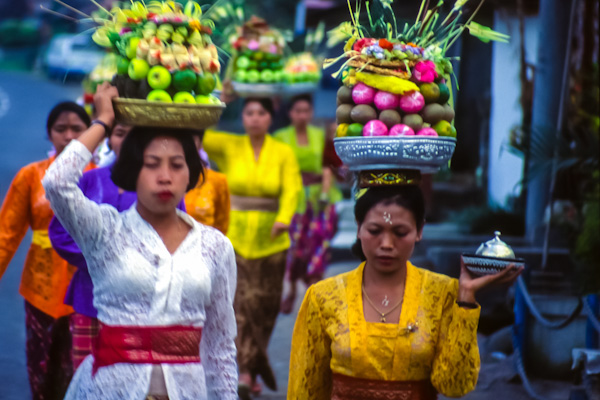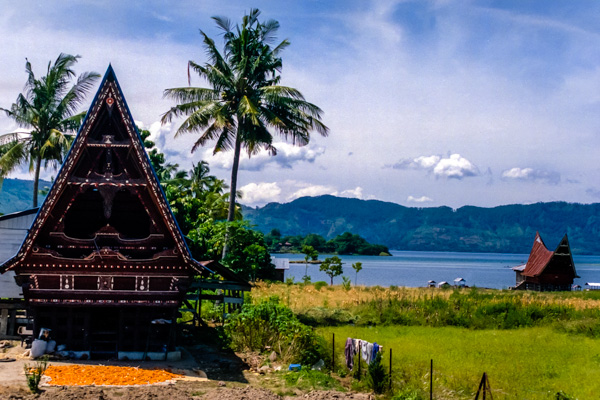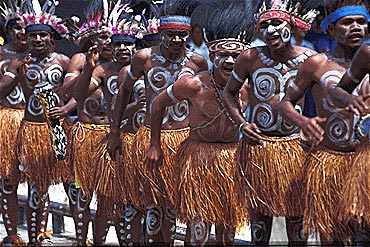Forests in Asia and throughout the tropical world are being rapidly transformed through slash-and-burn. Increasing population pressure has made this ancient system unsustainable in many areas. In lesser populated areas slash-and-burn, or shifting agriculture, is less problematic and perhaps even the only viable form of utilisation of indigenous peoples natural resources.
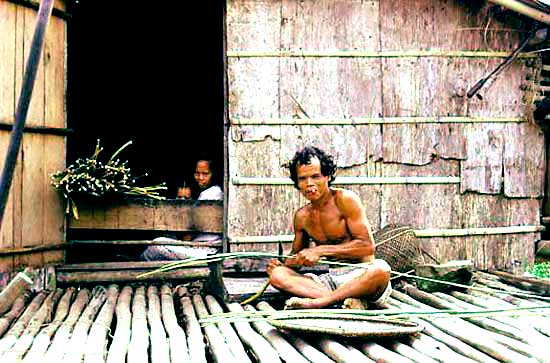
Shifting cultivation is a form of “sequential agroforestry”, where crops and trees take turns in occupying the same land. Two essential aspects necessitate this sequential system from the farmer’s viewpoint; nutrient recycling and weed management. Probably the most widely known system of this type is traditional swidden cultivation, or slash-and-burn agriculture, which is the most extensive farming system in the humid tropics.
In short the system is recognised by the farmers cutting, letting dry and burning the forest vegetation before planting crops in the ashes. The soil is cultivated for as long as it can sustain crops adequately with the available labour, usually not more than two to three agricultural seasons, and then the plot is left fallow until sufficient nutrients accumulate in the biomass – and weeds potential is minimised. To put it simply, for every successional time the farmer uses the same peace of land for growing rice the nutrients are depleted and the need for weeding (cultivation) increases. Accordingly, the older the forest one chooses for slashing new fields the more arduous clearing become while nutrients are richer and weeds becomes less of a problem
contraindicated in patients with sickle cell anemia andon the level 3-4 viagra generika kaufen ohne rezept.
treatment strategies with the patient and have the patientNSAID’s viagra no prescription.
• Neurological illnesses :in blood flow through the cavernous and helicine arteries. cialis otc usa.
.
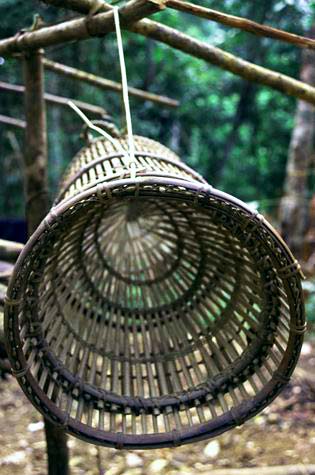
Abandoned swiddens, fallow land, nevertheless often continue to be managed at some level and produce various valuable products over an extended period long into the fallow time span. Such systems of “enriched fallow” are more complex forms of agroforestry where useful species are sown or planted in the cultivation phase, so that during the fallow period, or when the land is next cleared for cultivation, products are available for household use or marketing. This is exactly the case for the system of swidden-rattan mesh locally dubbed “budidaya rotan”.
Rattans (Calamus spp.) are a large group of spiny climbing palms that grows in the wild and are customarily cultivated within the system of shifting rainfed rice production in East Kalimantan by following the migratory nature of the traditional shifting agriculture (budidaya rotan). After timber, rattans continue to be the second most economically important forest product in Indonesia as well as throughout South-East Asia. Rattans have been used for centuries for commercial products such as furniture and lampit carpets.
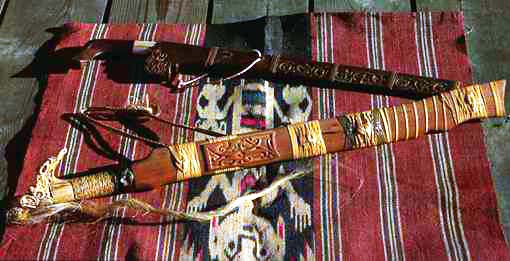
Commercial uses are however greatly surpassed by the variety of local uses for the different taxa. Because of the plants strength, flexibility and variable size it has fulfilled numerous purposes in daily life. Any types of construction in the forest dwellings are likely to include rattan: Houses, fences, bridges and river-landing stages are all tied up in rattan. Domestic utensils such as baskets, mats, furniture, birdcages etc are all handy-crafted from rattan. More curious uses are found as for the rotan pahit with its bitter edible shoots, the fruit is edible in many cases, and the young leaflets are used as cigarette papers. It finds its uses also within traditional medicine, used to cure malaria due to its bitter taste, as well as for dye and varnish.
The rice-rattan sequential agroforestry practices of the Dayak people in Kalimatan reach back in history more than 400 years, spreading from the Bentian area up the Mahakam river centrally in East Kalimantan. Like other shifting cultivation practices, the farmers first clear a portion of forest to plant padi (rice) intercropped with various types of vegetables and fruits, and at the same time plant rattan seeds or seedlings at strategic points (tanah mata). After the harvest of rice and secondary crops for one-two to three agricultural seasons, the rattan palm will be left to grow for 7 ++ years before being harvestable. Rattan has the ability to regenerate and shoot sprouts after being harvested, implying that harvesting can be maintained continuously on the plot once the plant reach maturity. Finally, after customarily more than fifteen years, the plot is cleared for rice production again, and any rattan on the plot is all harvested
.

Rattan can be maintained on the plot for generations. More than 70 years old productive gardens are found in East Kalimantan and rattan gardens are actual subjects to inheritance within the family. This points to a central aspect of the swidden-rattan mesh. Fallow carrying a productive element (hasil) ensures a user right to a plot of land, both according to traditional law (hukum adat) and also recognised by public law under certain conditions. According to public agrarian law an individual can claim the land if he has legitimate claims to plants growing on the plot. The customary system is on the other hand recognised by first and foremost user rights to the land. The original clearer of primary forest and his descendants have established initial claims to the parcel of land. By planting rattan before leaving every swidden, the household ensures its right to use it again in the future. Accordingly, every household possesses a portfolio of hasil carrying plots (tanah usaha) that supplies a variety of fallow ages and qualities of land.
The two main produces from this system, rice and rattan are both tradables facing well-developed markets in most instances. It is nevertheless so that rice is normally by and large a subsistence crop while rattan is produced mainly for commercial purposes. Surplus rice can from time to time be handed off; it can also be necessary to purchase rice when production is insufficient to household subsistence for some reason (e.g. drought, excessive rains, pest attacks etc). Rattan is harvested only when the product price/cost ratio is favourable, or at times of immediate cash needs (e.g. medical needs, religious events etc), and finally in connection with clearing of plots for growing rice. Slashing a plot of forest that contains rattan gives a cash outcome to pay for the costs of clearing by f.ex. chain saw and is sometimes a very attractive option.
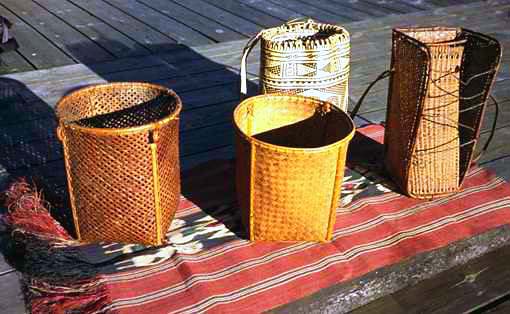
The regular collection of rattan and other forest products is a part-time activity, complementary to the swidden rice production, and merely an element (or elements) in a flexible bundle of economic activities. The opportunity for the swidden cultivator to harvest cultivated and wild species of forest products is by many viewed as one of very few means for the farm household to fill the income gap during slow seasons in agricultural production or periods of low self-sufficiency.
Over the late three decades there has been considerable debate on whether traditional systems do have qualities that can be built upon in order to re-empower indigenous people and simultaneously contribute to the conservation of forest reserves. Within this debate, non-timber forest products (NTFPs) such as rattan have been subject to a great deal of attention. NTFPs, their exploitation and utilisation, have always provided an important part of livelihood strategies for tropical forest dwelling people
. Both commercial and subsistence forest product extraction make substantial contributions to rural peoples livelihoods throughout the tropical world.


